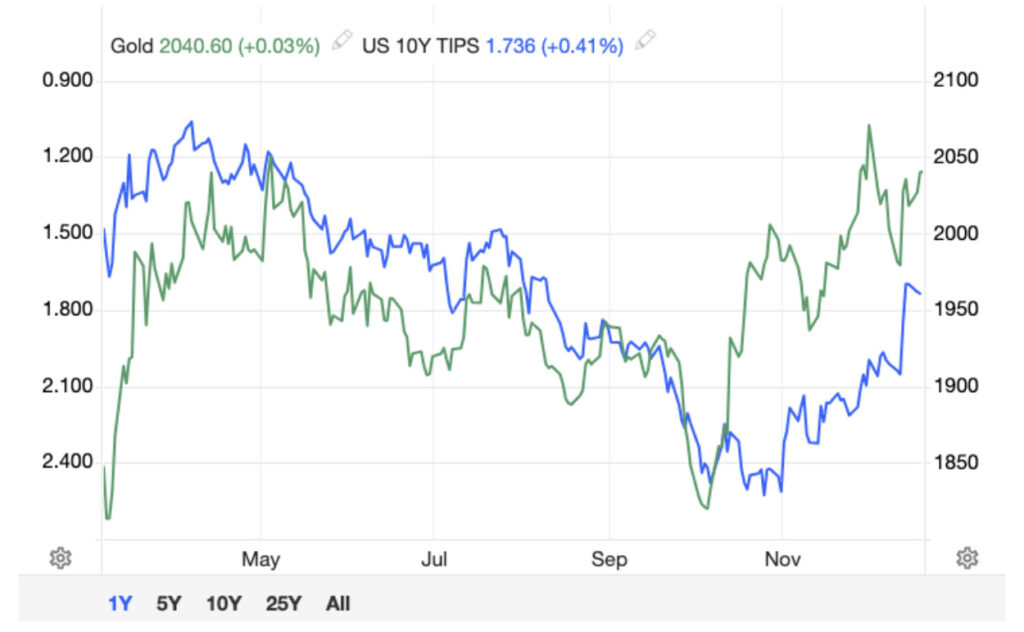Companies
How Gold Fields lost two leaders but kept its head
EXECUTIVES at Barrick Gold shook hands in public and sniggered in private. That was the story behind the $1.2bn cash sale in 2006 of the Canadian firm’s…

EXECUTIVES at Barrick Gold shook hands in public and sniggered in private. That was the story behind the $1.2bn cash sale in 2006 of the Canadian firm’s 50% stake in South Deep, a gold mine west of Johannesburg. As the tale goes, Barrick couldn’t believe the buyer, Gold Fields, coughed up. Notwithstanding the mine’s 70 years of mineable gold, South Deep was nothing but a headache for Barrick, the unwanted legacy asset of its Placer Dome takeover. The mine had trouble meeting production targets and four months prior to its sale, headgear and 6.7 kilometres of steel rope plummeted 1.6km down the main shaft. The accident meant a 40% cut to South Deep’s production that year.
Ian Cockerill was Gold Fields’ CEO at the time of the South Deep acquisition, but fixing the mine fell to his No 2, Gold Fields CFO Nick Holland. Appointed in 2008, Holland spent 10 years searching for a plan that would work for South Deep. That plan was devised by Martin Preece, hired by Holland in 2017 from De Beers. Preece recalls meeting Holland six weeks into the job, which had been predicated on fixing South Deep’s technical problems. “I’ve got good news and bad news,” Preece told Holland during a 5pm meeting at Gold Fields’ head office in Sandton. “You don’t have a technical problem at South Deep; you’ve got a people problem.”
Today, South Deep is a much leaner operation than when Barrick ran it. Production this year is forecast to be 380,000 ounces. Yet it is profitable, no doubt aided by the buoyant gold price. Ultimately, South Deep required finesse rather than a sledgehammer, says Preece. “We started employing based on capabilities, attitude and not how hard you can hit. Hitting it harder was never going to make it go faster.”
That said, Gold Fields’ ‘people problem’ came back with a vengeance last year after key executive committee members quit amid the firm’s proposed $6bn takeover of Yamana Gold. The deal was the clarion call of Chris Griffith, who took over at Gold Fields in 2021 after Holland retired. The market was taken by surprise and sold down Gold Fields’ shares aggressively. Griffith, who had landed Gold Fields’ growth strategy only a year post appointment, was offering too high a premium, analysts concluded. A year after that, Griffith fell on his sword, or so the company spins the story. Preece is now interim boss.
I am very different to Chris; I’m very different to Nick and if the board was trying to get carbon copies to just keep on replacing with the same, you’re never going to grow your business – Martin Preece
He wants the job on a full-time basis and says the departure of Griffith in November hasn’t unduly harmed Gold Fields. Shares in Gold Fields went on a tear in the first five months of the year, partially assisted by corporate momentum since January that Preece drove. In March, he signed a deal with AngloGold Ashanti to pool their Ghana mines, a dropping of farm boundaries that had been on the backburner for years. In terms of dealmaking in a heady market, the joint venture was the lowest of low-hanging fruit, and additionally allowed the partners the spectacular headline of creating ‘Africa’s largest gold mine’. Less than two months later, Gold Fields agreed a C$600m joint venture with Toronto’s Osisko Mining to develop the Windfall project in Quebec. The partners will spend a further $1.1bn exploring the prospects on Windfall’s 2,400km² property.
The market response to Gold Fields was positive, in the main. BMO Capital Markets analyst Raj Ray said it was “less transformational” than the earlier tilt for Yamana, but Osisko added “optionality”. It also partially addressed Gold Fields’ declining production profile, which had worried Griffith. “On balance, we see this deal as positive,” said Arnold van Graan, an analyst for Nedbank Securities.
Preece thinks the market lost sight of Gold Fields’ production profile, which will be between 2.2 and 2.4 million ounces a year on average until 2030. “I think that is one of the things that got lost in the Yamana transaction that, you know, the [production] cliff is looming. We are fairly comfortable until 2030.”
From 2024 to 2026, gold output will peak at 2.7 million oz a year owing to high grades at Gold Fields’ newly commissioned Chile mine, Salares Norte, which will see it produce 500,000oz/year until it tapers off. Windfall will add at least 125,000oz in attributable output annually, while the JV with AngloGold in Ghana will add 125,000 oz a year.
Provided South Deep keeps on track, Preece says he has no concerns regarding Gold Fields’ ‘heft’ in the market and feels no pressure to do deals. “We’re watching what’s happening in the market now; we’re going into a period of consolidation. There’s some shake out, but right now there are core areas we want to focus on in the short term.” Preece fears embarking on a “never-ending buying spree where you never get anything done properly. We’ve got a very clear message: we don’t want a premium and we don’t want dilution.”
Different personalities
According to a market source, Chris Griffith had a file on his desk titled ‘Deals’ from the very beginning. That sounds like standard apocryphy. Certainly, though, Griffith wanted to imprint his own ambitions on Gold Fields after nine years of relative conservatism under Nick Holland. Yamana was among Gold Fields’ previously identified targets but Griffith quickly drove it to the board, where it received full approval.
Preece says Holland and Griffith struck very different notes while at the company. Holland had an unstinting work ethic: “He had no end,” he says. Holland had a photographic memory, which meant he “forgot nothing”. Griffith was “a lot more inspirational”, with “big ideas”, says Preece.
One idea was that investors are drawn to companies with growing production; he viewed Gold Fields’ reduction in output from 2027 a mistake. “To have created value of 2.7 million oz … to let that slip off the other side doesn’t feel like the right long-term solution,” he said in an interview with Miningmx in August, 2021. In fairness to Griffith, however, he also said that quality of asset, jurisdiction and management were as important to investors. “There is some correlation to size as long as you’ve got those other things in place.”
To have created value of 2.7 million oz … to let that slip off the other side doesn’t feel like the right long-term solution – Chris Griffith
Clearly, Griffith is a big personality. That’s why Gold Fields’ statement that he resigned in November 2022 in order to protect the company’s reputation doesn’t feel right. Jumped or was pushed? After years working for an Anglo American subsidiary, Gold Fields was the opportunity of a lifetime for Griffith. In any event, he quit, leaving Preece in the hot seat.
Says Preece: “We need to move away from running businesses around personalities. It should be around the personality of the organisation.” Of the executive team that quit, most have been replaced, including a new head of legal affairs and a new business executive.
Interestingly, Preece’s position as chief operating officer of the South African division – South Deep – has also been filled as part of the new executive team. At the time of writing, this puts Preece’s Gold Fields future in jeopardy if the board doesn’t appoint him as the full-time CEO. Preece says he’d not be devastated if he’s not the anointed. “I have enough confidence in my abilities that I’m not going to take a razor blade out … South Deep has been the toughest job I’ve had in my career, but the most rewarding.
“I am very different to Chris; I’m very different to Nick, and if the board was trying to get carbon copies to just keep on replacing with the same, you’re never going to grow your business.”
Although the board has not instructed Preece to “sit on his hands”, as he describes it, one transaction that is beyond the group is a primary offshore listing. AngloGold Ashanti CEO Alberto Calderon is convinced his company will achieve a better rating after announcing in March that the firm would move its primary listing to New York from Johannesburg and take up a UK domicile. Its $500m cost in taxes is worth it, he says.
Preece spoke to Calderon about his company’s plans in an effort to “get to the bottom of it”. In the end, it will be more costly for Gold Fields than AngloGold: “Our situation is a little bit different to AngloGold structurally; we are coming in at a different cost, a higher cost.” That’s because Gold Fields used South African assets to grow the business and it will therefore incur upfront capital gains tax. AngloGold, however, can argue with the South African Revenue Service that it was created through the merger with Ashanti Goldfields in 2003.
“Is it the address where your office is or is it the address of where your underlying assets are?” asks Preece. “Certainly, we don’t see too much of a discount because we’re domiciled in South Africa.”
South Africa though is a concern for international shareholders. Preece acknowledges it but points to the quality of people in the organisation. “Fiscal governance is good here. We musn’t overcapitalise on it but South Africa is resilient.
“I worry about coalition governments but if you look at what’s going on in the United States, it’s so polarised. There must be stuff in the middle we can agree on.”
Gold market
One thing the market can certainly agree on is that the gold sector will continue to consolidate. “As gold miners navigate a complex, changing market, M&A still offers a means of building scale, optimising portfolios and unlocking synergies,” said auditor PwC in its Mine report in June. “We expect to see continued M&A activity in the gold sector, including mid-tier consolidation and a megadeal every few years.”
We expect to see continued M&A activity in the gold sector, including mid-tier consolidation and a mega-deal every few years – PwC, Mine 2023
A month earlier, Newmont Corporation sealed a $19.2bn deal for Australia’s Newcrest Mining, consolidating its position as the world’s biggest bullion producer. Splinter deals are likely as Newmont sells off extraneous mines. “There’s a long list of gold companies that would look at all assets that become available,” Daniel Morgan, an analyst with Sydney-based investment bank Barrenjoey told Bloomberg News in May.
For its part, Gold Fields might be a seller of mines long before it buys new ones. “We’ve got to look at some of the earlier assets in our portfolio and say where’s the optimal time to find value for those assets?” says Preece. “So that would most probably be stuff that’s shorter-term where we can … look at our existing portfolio.”
This article first appeared in the The Mining Yearbook 2023 available here.
The post How Gold Fields lost two leaders but kept its head appeared first on Miningmx.

Dolly Varden consolidates Big Bulk copper-gold porphyry by acquiring southern-portion claims – Richard Mills
2023.12.22
Dolly Varden Silver’s (TSXV:DV, OTCQX:DOLLF) stock price shot up 16 cents for a gain of 20% Thursday, after announcing a consolidation of…
Gold Digger: ‘Assured growth’ – central bank buying spree set to drive gold higher in 2024
Central banks will drive the price of gold higher in 2024, believe various analysts Spot gold prices seem stable to … Read More
The post Gold Digger:…
GoldTalks: Going big on ASX-listed gold stocks
Aussie investors are spoiled for choice when it comes to listed goldies, says Kyle Rodda. Here are 3 blue chips … Read More
The post GoldTalks: Going…









